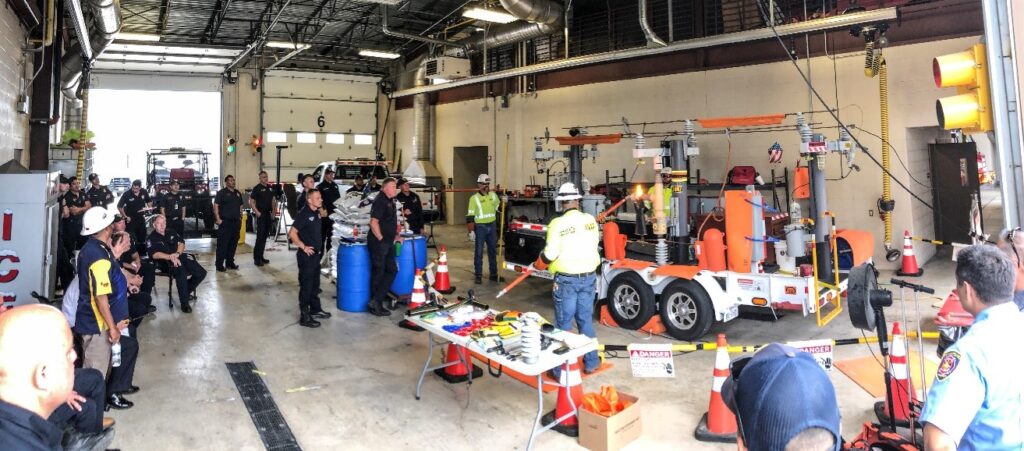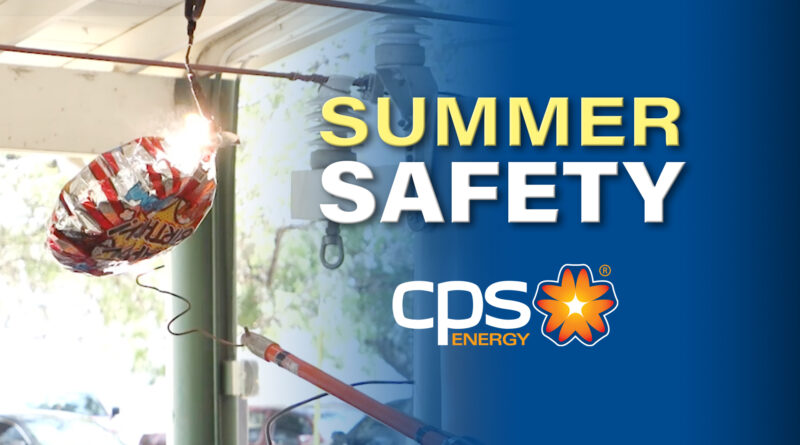Power line safety: staying away can be ‘best line of defense’
It takes a lot of power lines for CPS Energy to deliver electricity to over 907,000 electric customers. In fact, it takes over 8,100 miles of above ground wire. To put this in better perspective, that’s enough to stretch from San Antonio to New York City almost 4.5 times! And to accomplish this feat, CPS Energy maintains over 477,000 utility poles that connect these thousands of miles of power lines.
According to the Electrical Safety Foundation International, each year hundreds of people in the U.S. are killed or injured by touching or getting too close to electric lines. While many of us may not think about it, this can happen while we’re doing jobs around our own homes, for example, while trimming trees. Physical injuries or property damage can also occur.
Because we put safety first, we recently hosted a “Putting Safety Above All” event for our entire community. One of the highlights was the live Arc & Spark demonstration that showed what can happen when everyday items touch electric wires. Arcing and sparking occurs because electricity seeks to contact surfaces to reach the ground. As part of our Summer Safety series, we’re sharing and showing the reasons why you don’t want to make contact with power lines.
As the crowd gathered to watch the demo at the safety event, our field crew suited up in protective gear and flipped the switch to energize the 7,900-volt electric line. Next, they grabbed a 2-foot tree branch, a piece of kite string and a mylar (the shiny one) balloon and placed each of these items in contact with the single electric line. In less than a minute, the items produced a blue and white arc combined with loud crackling sounds—a sure sign to stay away. In 2021 alone, CPS Energy had to restore power to about 2,100 customers due to outages caused by mylar balloons. The crew explained that this type of arcing occurs because the balloons contain metallic substances that contact the wires. It’s for this reason that balloons need to be disposed of properly and not allowed to float away.

“I brought my grandson to come and see the demonstrations. They were way more than what we were expecting. We have a good amount of property and there’s many wires. We do our own tree trimming and I don’t think about that (arcing and sparking). These are important things to know. I hope they keep doing this.”
-Tina Chapoy, San Antonio resident who attended the event.
Kirk Nuckols with the CPS Energy Community Engagement team taught event attendees how to safely exit a vehicle if a power line comes down on it.
“Do not touch the vehicle and the ground at the same time because if there is a wire on it, the vehicle is energized. You have two options, either hop or shuffle,” he said.
He also emphasized that you should never touch any downed line. You should assume the line is live (energized) and report it immediately to 210-353-HELP (4357).
Another highlight of the safety event was the live gas safety demonstration. Attendees got to see firsthand the dangers of a gas line hit from improper digging. CPS Energy gas workers took shovels, dug into the dirt, and struck a mock buried gas line. With an incredible amount of force, gas and dirt flew high into the air.
CPS Energy team members shared the importance of calling 811 before you begin any project that requires digging, saying that 1) it can be dangerous if you don’t have lines marked before you begin digging; 2) it can cost you in repairs if you hit any buried lines; and 3) it’s the law! Also, you don’t want to be the person who shuts down gas, electric, cable or water service to your home or neighborhood.
Through eye-opening demonstrations and information sharing, this event showed why it’s important to be safe around electric and natural gas lines. If you want more information on energy safety, be sure to visit our website at cpsenergy.com.




How much cost to dig the power line?
Mr. Cedano,
Thanks for reading our blog on power line safety. To better help you, please submit the Residential Service Request Form to better assist you.
Reliability continues to be one of CPS Energy’s main priorities as we work to serve our customers and the community better.